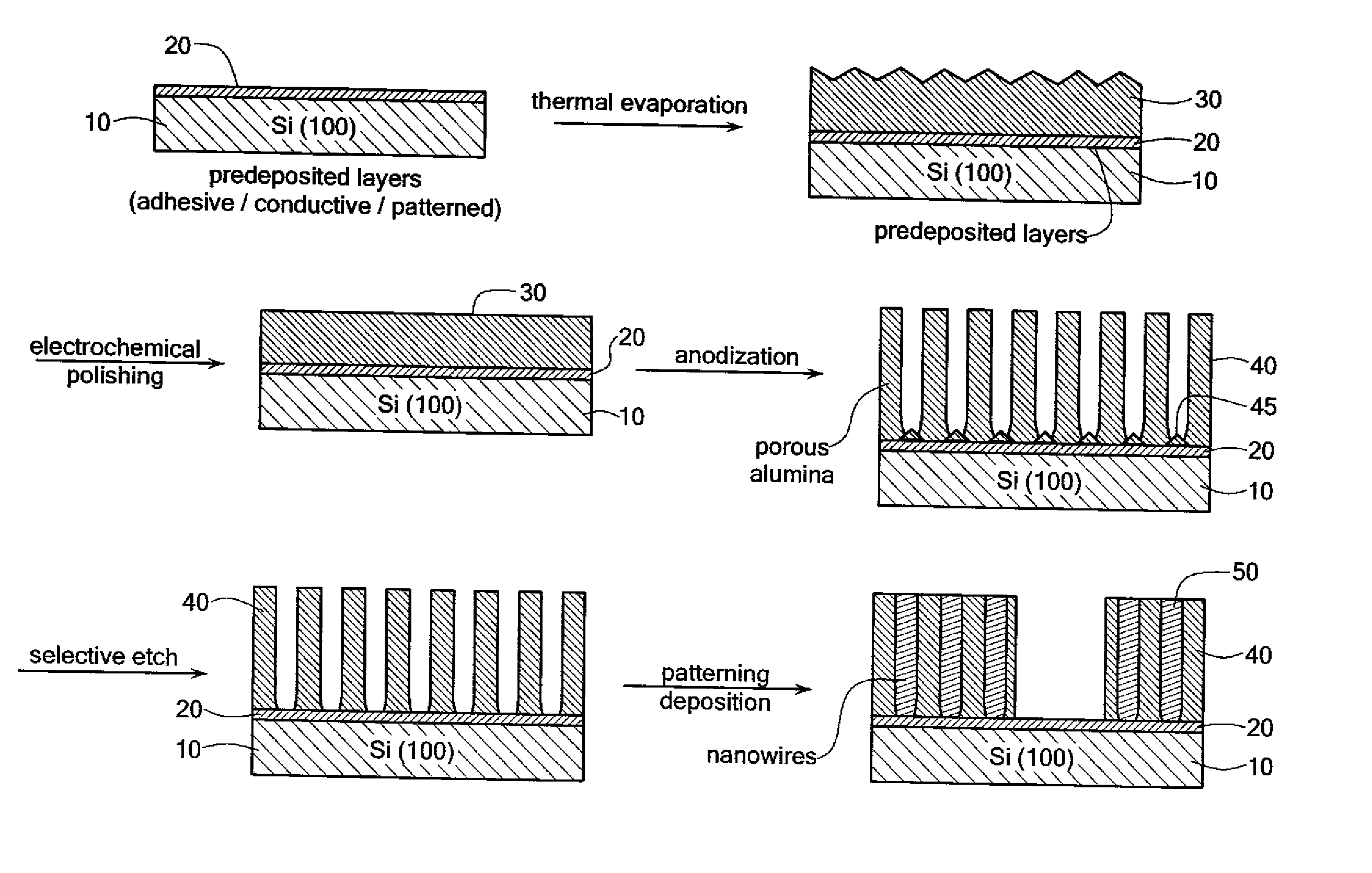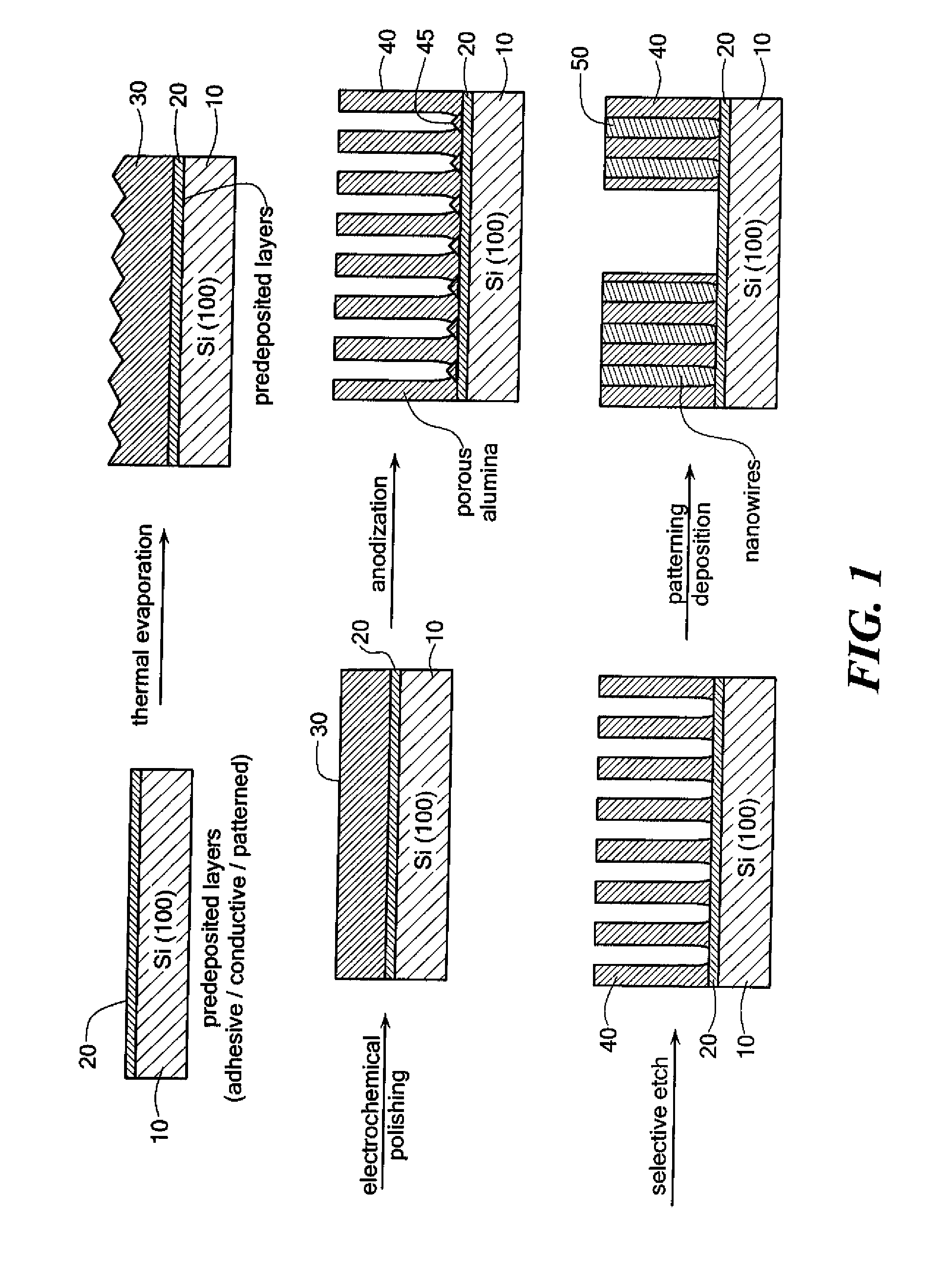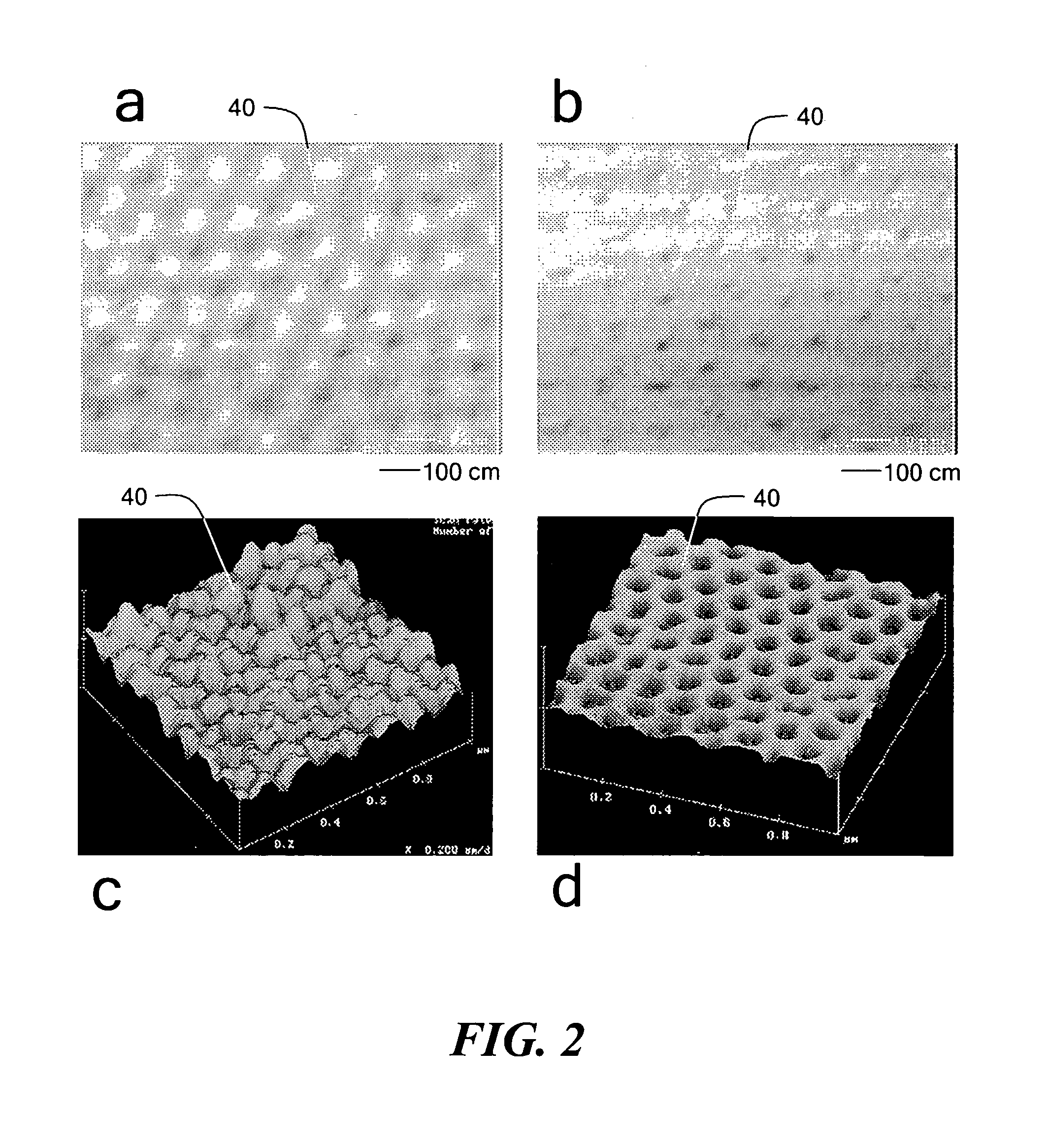Thick porous anodic alumina films and nanowire arrays grown on a solid substrate
a technology of porous anodic alumina and nanowire array, which is applied in the direction of crystal growth process, thermoelectric device manufacturing/treatment, transportation and packaging, etc., can solve the problems of film fracture, inability to sustain stress, and inability to use paa films in a wider range of applications, etc., to achieve the effect of easy growth and more tractability
- Summary
- Abstract
- Description
- Claims
- Application Information
AI Technical Summary
Benefits of technology
Problems solved by technology
Method used
Image
Examples
Embodiment Construction
[0032] Porous anodic alumina (PAA) has received considerable attention as a template for the fabrication of nanostructures. The ordered triangular array of pores of high aspect ratio, whose dimensions can be accurately tuned by the process parameters, has made PAA a suitable host for the fabrication of nanowires of a wide range of materials. Applications of these arrays of nanowires include dense magnetic storage devices, field emission devices, thermoelectric devices, photovoltaic devices, nano-electrodes, sensing devices, photonic components and the study of low-dimensional quantum effects. Several researchers have used PAA as a mask for etching or deposition processes.
[0033] More recently, it was found that the optical properties of alumina together with the proper positioning of the voids in the film result in a 2-dimensional photonic crystal with a bandgap which can be controlled in the wavelength range of 520-600 nm (for certain polarizations and propagation directions of the...
PUM
| Property | Measurement | Unit |
|---|---|---|
| thickness | aaaaa | aaaaa |
| thickness | aaaaa | aaaaa |
| surface roughness | aaaaa | aaaaa |
Abstract
Description
Claims
Application Information
 Login to View More
Login to View More - R&D
- Intellectual Property
- Life Sciences
- Materials
- Tech Scout
- Unparalleled Data Quality
- Higher Quality Content
- 60% Fewer Hallucinations
Browse by: Latest US Patents, China's latest patents, Technical Efficacy Thesaurus, Application Domain, Technology Topic, Popular Technical Reports.
© 2025 PatSnap. All rights reserved.Legal|Privacy policy|Modern Slavery Act Transparency Statement|Sitemap|About US| Contact US: help@patsnap.com



